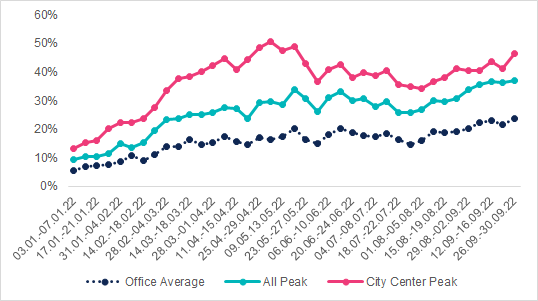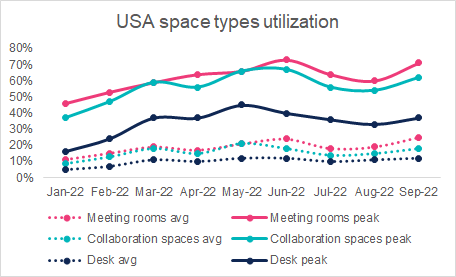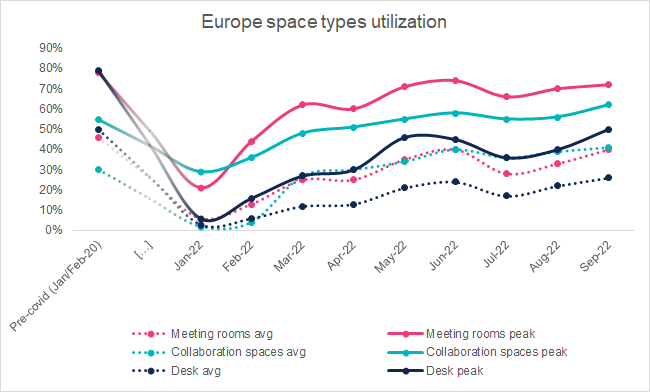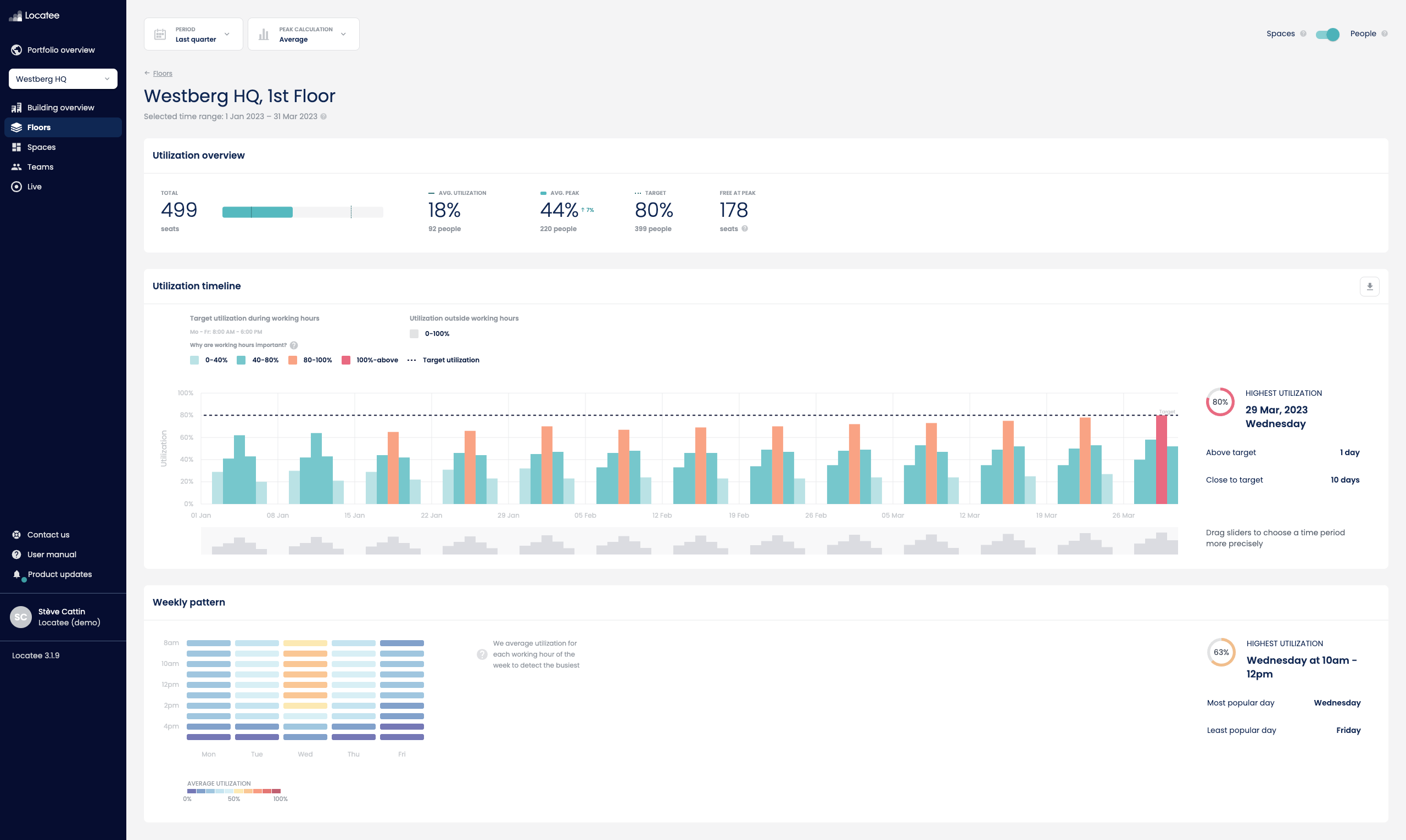A check-in on the global workplace occupancy trends, by Locatee.
Data source: anonymized Locatee customer data in the given time periods.
Office utilization
Let’s start by taking a look at the general trends for office utilization since January:
Explanation:
- Office average is the average utilization of the office space over each full week
- City Center Peak is the peak utilization registered in office locations situated in major urban centers
- All Peak is the peak utilization registered in all office locations
Interpretation:
The summer period was generally characterized by lower utilization rates, most likely due to holidays, starting with the month of June. After that, we do see the small signs of a wider return to office movement. Of course, in the context of hybrid policies, this still translates into average utilization rates of around 20%, with days such as Fridays and Mondays constantly seeing very low utilization numbers.
One observation is the reduction in the difference between “overall peaks” and peaks observed in city center locations. There is still a difference, but it less pronounced as it was earlier in the year. This may be the result of experimentations or limited rollouts of new workplace initiatives, that are catching up from prime locations to the rest of office locations.
Office density performance report
Explanation:
- High Density Average is the average utilization of the office space in high density office spaces (12 sqm/desk or less)
- High Density Peak is the peak utilization of the office space in high density office spaces (12 sqm/desk or less)
- Medium Density Average is the average utilization of the office space in medium density office spaces (between 12 and 25 sqm/desk)
- Medium Density Peak is the peak utilization of the office space in medium density office spaces (between 12 and 25 sqm/desk)
- Low Density Average is the average utilization of the office space in low density office spaces (25 sqm/desk or more)
- Low Density Peak is the peak utilization of the office space in low density office spaces (25 sqm/desk or more)
Interpretation:
On average, utilization is very similar across building density profiles. But a closer look seems to indicate a slightly better performance of low density office buildings when it comes to generating high utilization peaks.
This may be due to the user experience – lower densities are less likely to make the user question coming to the office due to overcrowding. Or this may also be due to companies recognizing low density buildings as better venues to organize group activities, thus generating these peaks intentionally.
Space types utilization report
Explanation:
- Meeting rooms avg: average monthly occupancy of meeting rooms
- Meeting rooms peak: peak occupancy of meeting rooms reached during the month
- Collaboration spaces avg: average monthly occupancy of collaboration spaces
- Collaboration spaces peak: peak occupancy of collaboration spaces reached during the month
- Desk avg: average monthly occupancy of desks (excl. individual offices)
- Desk peak: peak occupancy of desks reached during the month (excl. individual offices)
Interpretation:
The third quarter of 2022 has simply confirmed what we have observed throughout the year thus far. Even with holidays, even with a slight return to office trend since mid-august, “we-spaces” such as meeting rooms and collaboration spaces are still in higher demand than individual desks.
Looking in detail, we observe that in the US, higher utilization rates has generated a sharp increase in the demand for “we-spaces”. However in Europe, since August, we see an increase in the peak utilization of desks – with a stronger acceleration than for “we-spaces”.
Get regular insights on workplace trends straight to your mailbox
About the author
Raphael Morgulis
PR & Analyst Relations ManagerRaphaël is our PR/AR manager at Locatee. As a young child, he was fascinated with connecting the dots images where drawing lines between disconnected spots created a meaningful and beautiful image. He hasn't changed that much since, as he now tries to do the same with words for a living.











